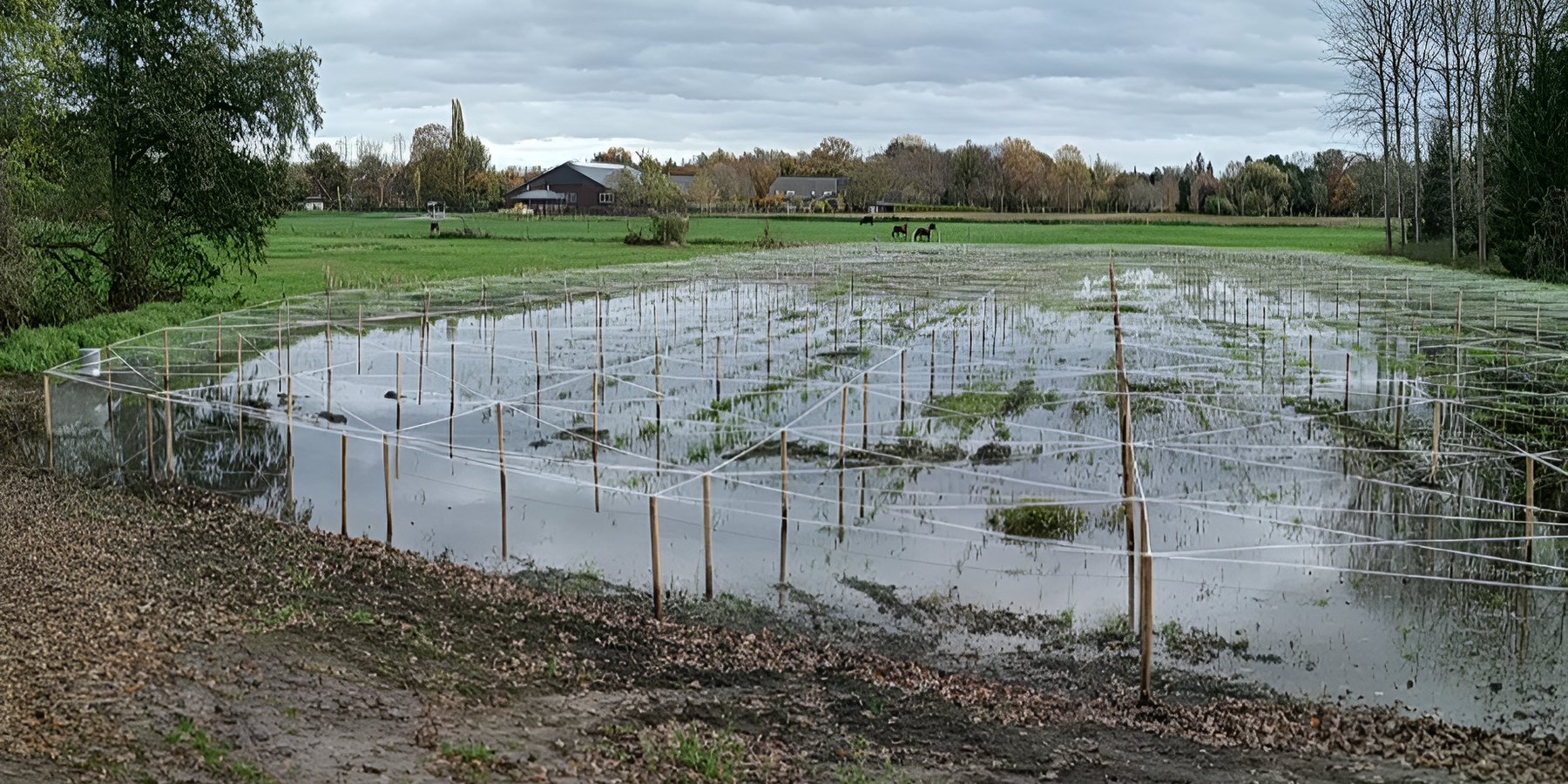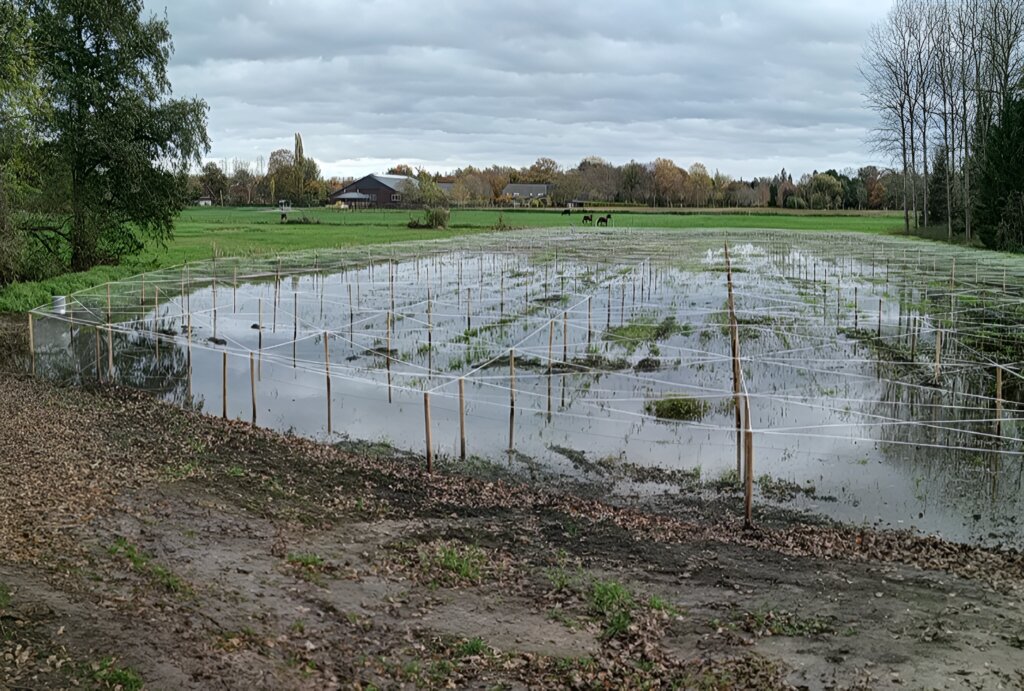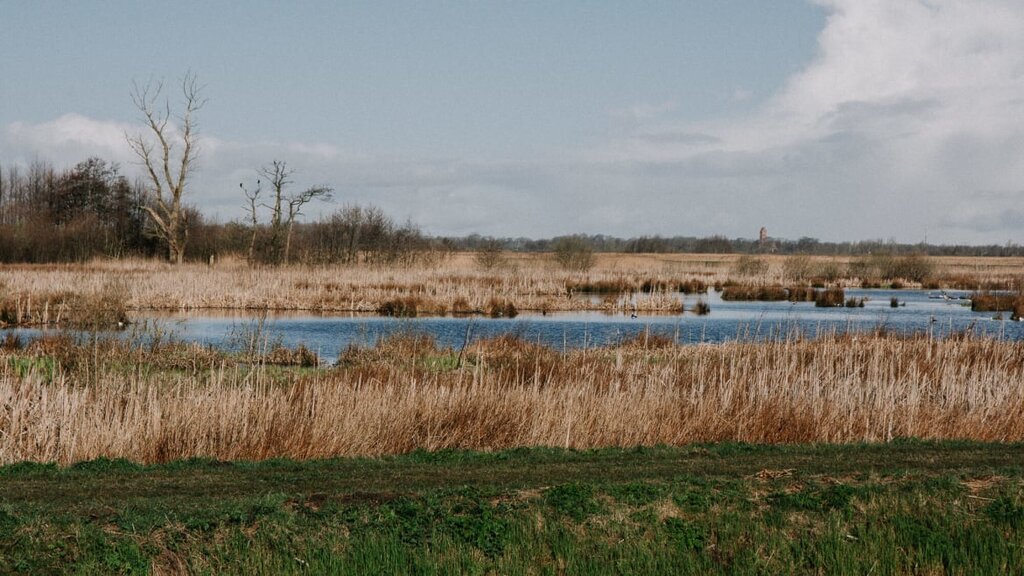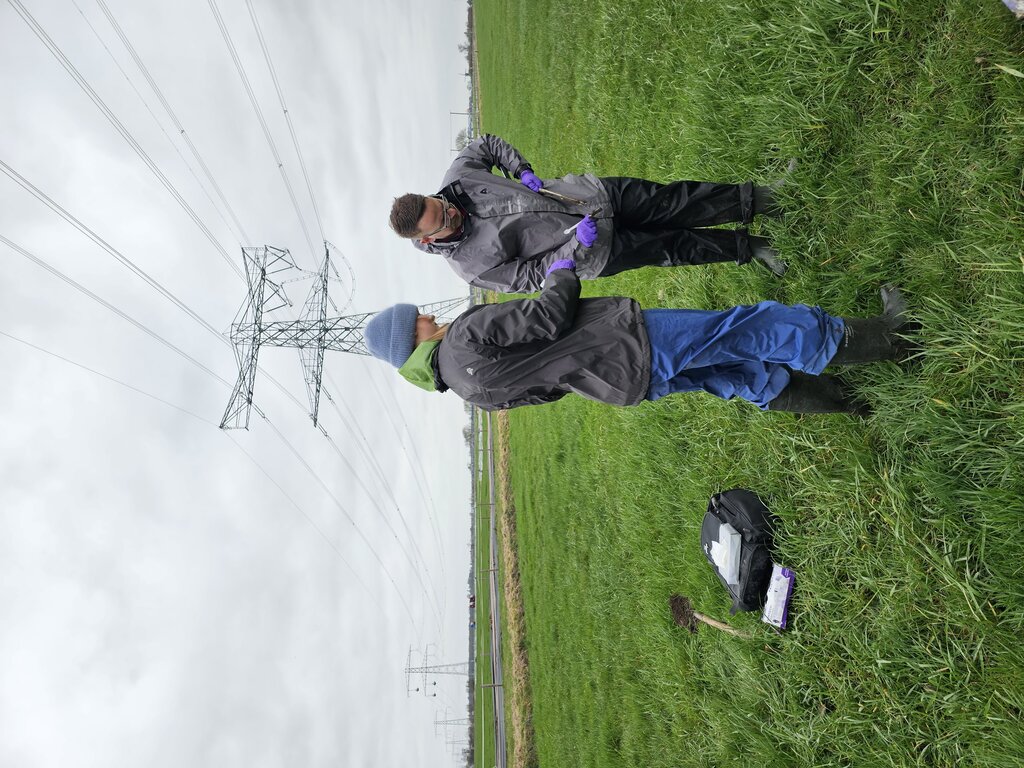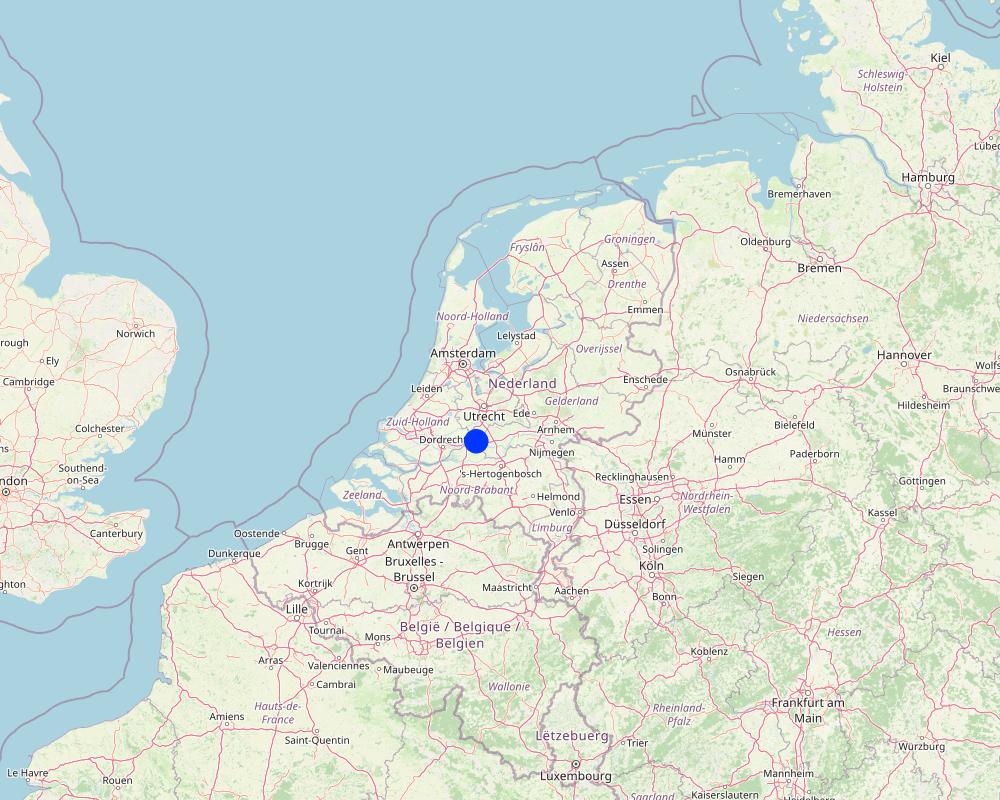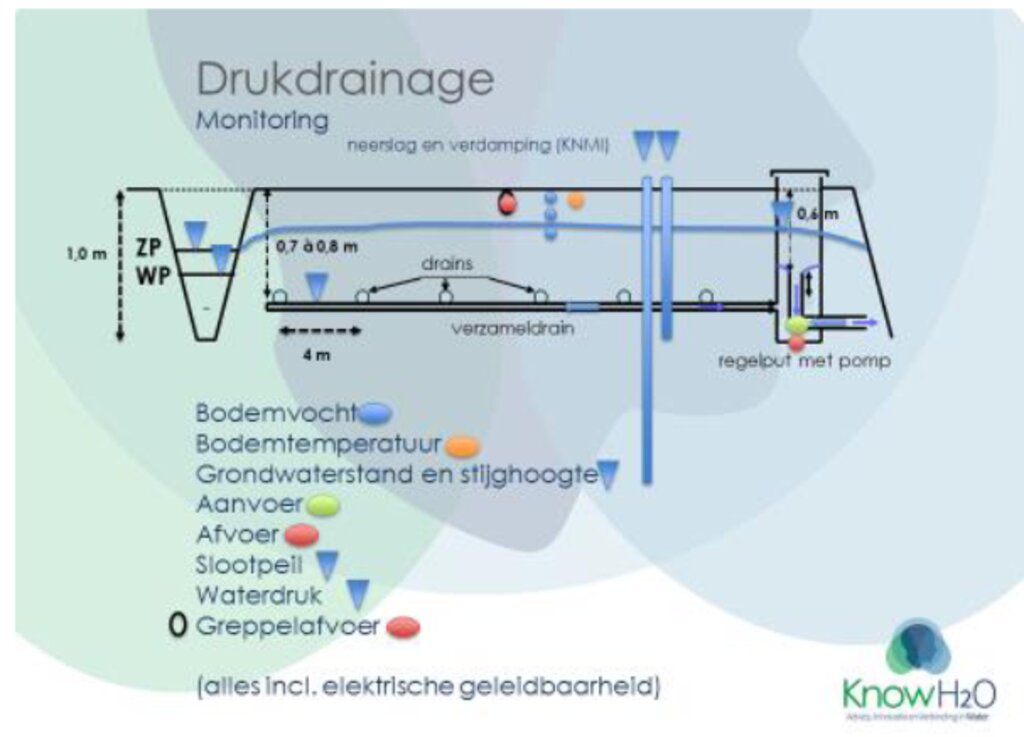Peatland Rewetting [Países Baixos]
- Criação:
- Atualização:
- Compilador/a: William Powell
- Editor: Carlos Gil Picon
- Revisores: Rima Mekdaschi Studer, William Critchley
Peatland Rewetting
technologies_7140 - Países Baixos
Veja as seções
Expandir tudo Recolher tudo1. Informação geral
1.2 Detalhes do contato das pessoas capacitadas e instituições envolvidas na avaliação e documentação da tecnologia
Pessoa(s) capacitada(s)
Especialista em GST:
Powell William
JIN Climate & Sustainability
Países Baixos
Nome do projeto que facilitou a documentação/avaliação da Tecnologia (se relevante)
Land Use Based Mitigation for Resilient Climate Pathways (LANDMARC)Nome da(s) instituição(ões) que facilitou(ram) a documentação/ avaliação da Tecnologia (se relevante)
JIN Climate and Sustainability (JIN) - Países Baixos1.3 Condições em relação ao uso da informação documentada através de WOCAT
O/a compilador/a e a(s) pessoa(s) capacitada(s) aceitam as condições relativas ao uso de dados documentados através da WOCAT:
Sim
1.4 Declaração de sustentabilidade da tecnologia descrita
A tecnologia descrita aqui é problemática em relação a degradação da terra de forma que não pode ser declarada uma tecnologia de gestão sustentável de terra?
Não
2. Descrição da tecnologia de GST
2.1 Descrição curta da tecnologia
Definição da tecnologia:
Peatland rewetting is a climate change mitigation technology that involves raising and maintaining high water tables in agricultural peatland through controlled drainage. It reduces soil subsidence and CO2 emissions while preserving biodiversity. This technology offers environmental benefits but faces challenges in policy support and economic viability.
2.2 Descrição detalhada da tecnologia
Descrição:
Peatland rewetting is increasingly being applied in the Netherlands, particularly in the province of Zuid Holland, as a critical environmental management strategy. This technology is implemented in agricultural fields on peatland soil, representing an important shift in land management practices. The method can be characterised by raising and maintaining a high water table in peatland areas through the implementation and careful control of a sophisticated drainage system.
The system's technical infrastructure includes an integrated network of pipes, pumps (including innovative solar-powered options), and strategically placed ditches to control the water level. Advanced monitoring equipment is installed to track water table levels with precision, ensuring optimal management of the wetland conditions. The primary purpose of peatland rewetting is to mitigate climate change by reducing soil subsidence and consequent CO2 emissions from drained peatlands, which globally contribute around 2 Gt of CO2 annually.
Implementation requires several key components and activities. The initial phase involves comprehensive site assessment and installation of the drainage system, including careful placement of monitoring equipment and, where applicable, solar panels for sustainable pump operation. Ongoing maintenance activities are crucial and involve regular system monitoring, component repairs, and water level adjustments to maintain optimal conditions between -10 and +20 cm, as demonstrated in projects like the Swinkels case study.
The benefits and impacts of peatland rewetting are multifaceted. Primary environmental benefits include significant reduction in CO2 emissions by preventing peat oxidation, preservation of valuable peatland habitats and biodiversity, and improved regional water management. The practice also helps avoid substantial costs associated with soil subsidence, such as infrastructure repairs and dam reinforcement that would otherwise be necessary in degraded peatland areas.
From the land user's (farmer's) perspective, the transition to peatland rewetting presents both opportunities and challenges. The main benefits include access to potential subsidies, avoided costs due to soil subsidence, and the opportunity to participate in innovative agricultural practices like paludiculture - the cultivation of wet-tolerant crops such as cattail, which can be used for various applications including fodder. However, farmers may face challenges including significant initial investment costs, the necessity to adapt to new farming techniques and business models, and potential yield impacts during the transition period as they navigate the learning curve of wet agriculture.
Some environmental considerations require careful management. While peatland rewetting generally provides positive environmental outcomes, there can be challenges with nutrient leaching affecting water quality, which necessitates careful monitoring and management strategies. Additionally, stakeholders express concerns about the lack of consistent long-term subsidies and policy support for maintaining these practices, highlighting the need for more robust institutional frameworks to support sustainable peatland management.
Scientific monitoring of these sites, as demonstrated in the LANDMARC project, includes sophisticated tools such as soil sampling for physical and chemical analysis, molecular microbial identification, greenhouse gas measurements, and the use of satellite data and field mapping to track progress and impact. This comprehensive monitoring approach helps ensure the effectiveness of rewetting initiatives and provides valuable data for scaling up these solutions to national and continental levels.
2.3 Fotos da tecnologia
2.5 País/região/locais onde a tecnologia foi aplicada e que estão cobertos nesta avaliação
País:
Países Baixos
Região/Estado/Província:
South Holland
Especificação adicional de localização:
Alblasserwaard-Vijfheerenlanden
Especifique a difusão da tecnologia:
- Aplicado em pontos específicos/concentrado numa pequena área
O(s) local(is) tecnológico(s) está(ão) localizado(s) em uma área permanentemente protegida?
Não
Comentários:
There is no indication that the sites have a special protected status. The sites are active agricultural lands used for dairy farming. The peatland rewetting sites are on working farms, two organic dairy farms and one conventional dairy farm. The land is described as a permanent grassland. They are actively managed agricultural areas rather than protected natural reserves.
Map
×2.6 Data da implementação
Indique o ano de implementação:
2022
2.7 Introdução da tecnologia
- regional collaboration
Comentários (tipos de projeto, etc.):
Key partners of peatland rewetting in this region include farmers, research institutes, local water authorities, and nature organizations
3. Classificação da tecnologia de GST
3.1 Principal/principais finalidade(s) da tecnologia
- Reduz, previne, recupera a degradação do solo
- Preserva ecossistema
- Preservar/melhorar a biodiversidade
- Adaptar a mudanças climáticas/extremos e seus impactos
- Atenuar a mudanças climáticas e seus impactos
3.2 Tipo(s) atualizado(s) de uso da terra onde a tecnologia foi aplicada
Uso do solo misturado dentro da mesma unidade de terra:
Não

Pastagem
Tipo de animal:
- gado - lácteo
É praticado o manejo integrado de culturas e pecuária?
Sim
Caso afirmativo, especifique:
The technology aims to combine peatland conservation and dairy farming. It involves both land and livestock.
Produtos e serviços:
- leite
- grass/fodder production, carbon sequestration, water management.
Espécie:
gado - lácteo
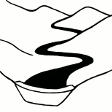
Vias navegáveis, corpo d'água, zonas úmidas
3.3 O uso do solo mudou devido à implementação da Tecnologia?
O uso do solo mudou devido à implementação da Tecnologia?
- Não (Continuar com a pergunta 3.4)
3.4 Abastecimento de água
Abastecimento de água para a terra na qual a tecnologia é aplicada:
- Misto de precipitação natural-irrigado
Comentários:
There will be pressurized draining systems installed, suggesting water management beyond reliance on rainfall.
3.5 Grupo de GST ao qual pertence a tecnologia
- Desvio e drenagem de água
- Gestão/proteção de zonas úmidas
3.6 Medidas de GST contendo a tecnologia

Medidas estruturais
- S3: Valas graduadas, canais, vias navegáveis
Comentários:
Drainage systems are a significant structural intervention to the landscape. The hydrology of the area is modified through engineered solutions. This technology allows for control of groundwater levels independently from ditch water levels.
3.7 Principais tipos de degradação da terra abordados pela tecnologia

Deteriorização química do solo
- Cn: declínio de fertilidade e teor reduzido de matéria orgânica (não causado pela erosão)

Deteriorização física do solo
- Ps: Subsidência de solos orgânico, sedimentação do solo

Degradação biológica
- Bc: redução da cobertura vegetal
- Bh: perda dos habitats
- Bq: quantidade/ declínio da biomassa
- Bs: Qualidade e composição de espécies/declínio de diversidade
- Bl: perda da vida do solo

Degradação da água
- Hs: mudança na quantidade de água de superfície
- Hg: mudança no lençol freático/aquífero
- Hp: declínio da qualidade de água de superfície
- Hw: redução da capacidade de tamponamento de zonas úmidas
Comentários:
The most significant issues being addressed by peatland rewetting is Ps: subsidence of organic soils, setting of soil.
3.8 Redução, prevenção ou recuperação da degradação do solo
Especifique o objetivo da tecnologia em relação a degradação da terra:
- Prevenir degradação do solo
- Reduzir a degradação do solo
Comentários:
The primary goal of peatland rewetting is to reduce land degradation. By implementing pressurized drainage systems, the technology seeks to slow down the rate of peat decomposition and subsequent soil subsidence.
4. Especificações técnicas, implementação de atividades, entradas e custos
4.1 Desenho técnico da tecnologia
Especificações técnicas (relacionada ao desenho técnico):
Schematic representation of the pressurized drainage system and monitoring setup for a peatland rewetting plot. The system includes drainage pipes at 4m intervals, a central collection pipe, control wells, and various monitoring equipment for measuring soil moisture, groundwater levels, ditch water levels, and water flows. Solar-powered pumps control water levels independently of ditch water levels. Monitoring also includes soil temperatures, biodiversity assessments, and continuous measurement of soil surface height changes.
Autor:
Gé van den Eertwegh
Data:
2020
4.2 Informação geral em relação ao cálculo de entradas e custos
Especifique como custos e entradas foram calculados:
- por área de tecnologia
Indique o tamanho e a unidade de área:
8.4 ha
Outro/moeda nacional (especifique):
EUR
Indique a média salarial da mão-de-obra contratada por dia:
60 EUR per hour is the estimated average cost of labour in the Netherlands
4.3 Atividades de implantação
| Atividade | Periodicidade (estação do ano) | |
|---|---|---|
| 1. | selection of test plots | Winter/Spring |
| 2. | creating drainage plans | Winter/Spring |
| 3. | obtaining permits | Winter/Spring |
| 4. | installing drainage systems | Summer |
| 5. | installing monitoring equipment | Summer |
| 6. | damming ditches | Late Summer/Early Fall |
| 7. | installing pumps | Summer |
| 8. | setting up reference plots for comparison | Full Year |
| 9. | conducting baseline measurements | Full Year |
Comentários:
No clear data available on specific timing, however estimations are made based on the technical requirements and the climate of the Netherlands.
4.4 Custos e entradas necessárias para a implantação
| Especifique a entrada | Unidade | Quantidade | Custos por unidade | Custos totais por entrada | % dos custos arcados pelos usuários da terra | |
|---|---|---|---|---|---|---|
| Mão-de-obra | installation | |||||
| Mão-de-obra | maintenance | |||||
| Equipamento | drainage and collection pipes | |||||
| Equipamento | pumps and solar panels | |||||
| Equipamento | control wells | |||||
| Equipamento | monitoring equipment (soil moisture sensors, etc.) |
Se você não conseguir discriminar os custos na tabela acima, forneça uma estimativa dos custos totais para estabelecer a Tecnologia:
579000,0
Se o usuário da terra arca com menos que 100% dos custos, indique quem cobre os custos remanescentes:
There is local and national government involvement in sharing the costs. Farmers also contribute 25% of the installation costs and provide in-kind contributions through their time.
Comentários:
The total cost of establishment and ongoing costs for the whole area of 8.4 hectares are estimated to be EUR 570000 including VAT. The breakdown is:
a. Monitoring/ analysis 44%
b. Education 2%
c. Communication 7%
d. Reporting 8%
e. Management 11%
f. Materials/ apparatus 16%
g. Drainage system including ditches 9%
4.5 Atividades recorrentes/manutenção
| Atividade | Periodicidade/frequência | |
|---|---|---|
| 1. | ongoing monitoring of soil moisture, groundwater levels, and soil movement | |
| 2. | Management of water levels using the pumping system | |
| 3. | Maintenance of drainage pipes and pumps | |
| 4. | Data collection and analysis | |
| 5. | Ecological monitoring (biodiversity, wading birds) | |
| 6. | Grass yield measurements | |
| 7. | Soil temperature monitoring | |
| 8. | Water quality testing | |
| 9. | Reporting and communication activities |
Comentários:
See comment under 4.4
4.6 Custos e entradas necessárias pata a manutenção/atividades recorrentes (por ano)
| Especifique a entrada | Unidade | Quantidade | Custos por unidade | Custos totais por entrada | % dos custos arcados pelos usuários da terra | |
|---|---|---|---|---|---|---|
| Mão-de-obra | Systems operation and monitoring | |||||
| Mão-de-obra | Maintenance and potential replacement of equipment | |||||
| Mão-de-obra | Data analysis and reporting costs | |||||
| Mão-de-obra | ecological survey costs | |||||
| Outros | Energy costs for pumps (some are solar) |
Comentários:
See comment under 4.4 and note that Euros 579000 (including VAT) is an estimate of both establishment AND ongoing costs
4.7 Fatores mais importantes que afetam os custos
Descreva os fatores mais determinantes que afetam os custos:
The most important factors affecting the costs are the installation of the drainage systems, monitoring equipment and activities, scale of implementation, types of drainage pipes, solar-powered pumping systems, project management and research activities, adaptation of surrounding water management, duration of the project, labor costs, and location-specific factors (such as the soil profile of the area of implementation).
5. Ambiente natural e humano
5.1 Clima
Precipitação pluviométrica anual
- <250 mm
- 251-500 mm
- 501-750 mm
- 751-1.000 mm
- 1.001-1.500 mm
- 1.501-2.000 mm
- 2.001-3.000 mm
- 3.001-4.000 mm
- > 4.000 mm
Especifique a média pluviométrica anual em mm (se conhecida):
790,00
Indique o nome da estação meteorológica de referência considerada:
statista
Zona agroclimática
- Subúmido
5.2 Topografia
Declividade média:
- Plano (0-2%)
- Suave ondulado (3-5%)
- Ondulado (6-10%)
- Moderadamente ondulado (11-15%)
- Forte ondulado (16-30%)
- Montanhoso (31-60%)
- Escarpado (>60%)
Formas de relevo:
- Planalto/planície
- Cumes
- Encosta de serra
- Encosta de morro
- Sopés
- Fundos de vale
Zona de altitude:
- 0-100 m s.n.m.
- 101-500 m s.n.m.
- 501-1.000 m s.n.m.
- 1.001-1.500 m s.n.m.
- 1.501-2.000 m s.n.m.
- 2.001-2.500 m s.n.m.
- 2.501-3.000 m s.n.m.
- 3.001-4.000 m s.n.m.
- > 4.000 m s.n.m.
Indique se a tecnologia é aplicada especificamente em:
- Não relevante
Comentários e outras especificações sobre a topografia:
The Netherlands is flat, although the technology is applied to an area with a 1 to 3 ditches.
5.3 Solos
Profundidade do solo em média:
- Muito raso (0-20 cm)
- Raso (21-50 cm)
- Moderadamente profundo (51-80 cm)
- Profundo (81-120 cm)
- Muito profundo (>120 cm)
Textura do solo (solo superficial):
- Fino/pesado (argila)
Textura do solo (>20 cm abaixo da superfície):
- Médio (limoso, siltoso)
Matéria orgânica do solo superficial:
- Alto (>3%)
5.4 Disponibilidade e qualidade de água
Lençol freático:
< 5 m
Disponibilidade de água de superfície:
Bom
Ocorre inundação da área?
Sim
Regularidade:
Esporadicamente
5.5 Biodiversidade
Diversidade de espécies:
- Médio
Diversidade de habitat:
- Médio
Comentários e outras especificações sobre biodiversidade:
Although these areas support some important biodiversity values, their primary current use is agricultural.
5.6 Características dos usuários da terra que utilizam a tecnologia
Sedentário ou nômade:
- Sedentário
Orientação de mercado do sistema de produção:
- Comercial/mercado
Nível relativo de riqueza:
- Média
Indivíduos ou grupos:
- Indivíduo/unidade familiar
Nível de mecanização:
- Mecanizado/motorizado
Idade dos usuários da terra:
- meia-idade
Indique outras características relevantes dos usuários da terra:
I do not have specific information available on off-farm income or the gender of the land-users, although it is well-known that 60% of Dutch farm land is family-owned.
5.7 Área média de terrenos utilizados pelos usuários de terrenos que aplicam a Tecnologia
- < 0,5 ha
- 0,5-1 ha
- 1-2 ha
- 2-5 ha
- 5-15 ha
- 15-50 ha
- 50-100 ha
- 100-500 ha
- 500-1.000 ha
- 1.000-10.000 ha
- > 10.000 ha
É considerado pequena, média ou grande escala (referente ao contexto local)?
- Pequena escala
Comentários:
likely to be considered small-scale
5.8 Propriedade de terra, direitos de uso da terra e de uso da água
Propriedade da terra:
- Indivíduo, intitulado
Direitos do uso da terra:
- Indivíduo
Direitos do uso da água:
- Comunitário (organizado)
5.9 Acesso a serviços e infraestrutura
Saúde:
- Pobre
- Moderado
- Bom
Educação:
- Pobre
- Moderado
- Bom
Assistência técnica:
- Pobre
- Moderado
- Bom
Emprego (p. ex. não agrícola):
- Pobre
- Moderado
- Bom
Mercados:
- Pobre
- Moderado
- Bom
Energia:
- Pobre
- Moderado
- Bom
Vias e transporte:
- Pobre
- Moderado
- Bom
Água potável e saneamento:
- Pobre
- Moderado
- Bom
Serviços financeiros:
- Pobre
- Moderado
- Bom
6. Impactos e declarações finais
6.1 Impactos no local mostrados pela tecnologia
Impactos socioeconômicos
Produção
Produção de forragens
Comentários/especificar:
Peatland rewetting aims to maintain or slightly improve grass yields
Disponibilidade e qualidade de água
Qualidade da água potável
Disponibilidade de água para irrigação
Impactos ecológicos
Biodiversidade: vegetação, animais
Diversidade de habitat
Comentários/especificar:
Aims to improve biodiversity, especially for wading birds and aquatic life
Clima e redução de riscos de desastre
Impactos da seca
Comentários/especificar:
helps manage drought and heavy rainfall situations
Emissão de carbono e gases de efeito estufa
Comentários/especificar:
Reduces greenhouse gas emissions
Outros impactos ecológicos
Potential improvement in water quality of ditches and surrounding water bodies
Especificar a avaliação dos impactos no local (medidas):
The implementation of peatland rewetting through raised water levels and submerged drains has shown significant reduction in greenhouse gas emissions, with measurements indicating a decrease from 19-50 t CO2 per hectare annually to approximately half those levels. While this water management approach impacts dairy farming viability, the use of innovative drainage systems has demonstrated that agricultural production can be maintained. Monitoring data shows reduced soil subsidence rates, from an average of 8 mm/year to lower rates, while also indicating potential improvements in habitat conditions for meadow birds and wetland biodiversity.
6.2 Impactos externos mostrados pela tecnologia
Disponibilidade de água
Comentários/especificar:
Rewetting improves regional hydrology by keeping water longer in the landscape, enhancing water retention capacity.
Caudal confiável e estável em período seco
Comentários/especificar:
Water retention in rewetted peatlands helps maintain more stable water flows during dry periods.
Cheias de jusante
Comentários/especificar:
Restored peatlands act as natural water buffers, reducing peak flows and downstream flooding risks.
Poluição de água subterrânea/rio
Comentários/especificar:
Rewetting reduces nutrient runoff (particularly nitrate) into groundwater and surface waters, improving water quality.
Capacidade de tamponamento/filtragem
Comentários/especificar:
Restored wetland conditions enhance the natural filtering capacity of peatlands, improving water quality in the wider landscape.
Danos na infraestrutura pública/privada
Comentários/especificar:
Rewetting helps reduce soil subsidence which otherwise damages roads, buildings and other infrastructure.
Impacto dos gases de efeito estufa
Comentários/especificar:
Measurements show significant reduction in greenhouse gas emissions, from 19-50 t CO2 per hectare annually to approximately half those levels through water management.
Especificar a avaliação dos impactos fora do local (medidas):
The project includes monitoring of water quality and ecology in surrounding ditches. Greenhouse gas emissions are expected to greatly decrease.
6.3 Exposição e sensibilidade da tecnologia às mudanças climáticas graduais e extremos/desastres relacionados ao clima (conforme o ponto de vista dos usuários da terra)
Mudança climática gradual
Mudança climática gradual
| Estação do ano | aumento ou diminuição | Como a tecnologia lida com isso? | |
|---|---|---|---|
| Temperatura anual | aumento | não conhecido | |
| Temperatura sazonal | verão | aumento | não conhecido |
| Precipitação pluviométrica anual | redução/diminuição | não conhecido |
Comentários:
The prediction is more for extreme weather patterns than a decrease of rainfall overall. The technology's effectiveness may be challenged by these changes, as maintaining optimal water levels becomes more difficult as rainfall decreases. Therefore there may be an impact on this technology during extended dry periods.
6.4 Análise do custo-benefício
Como os benefícios se comparam aos custos de implantação (do ponto de vista dos usuários da terra)?
Retornos a curto prazo:
negativo
Retornos a longo prazo:
positivo
Como os benefícios se comparam aos custos recorrentes/de manutenção(do ponto de vista dos usuários da terra)?
Retornos a curto prazo:
negativo
Retornos a longo prazo:
positivo
Comentários:
The short-term returns on peatland rewetting are negative due to their (sometimes significantly) high establishment costs. The establishment costs, however, are the highest cost associated with this technology and the long-term returns and benefits are what make the high upfront costs attractive for land-users.
6.5 Adoção da tecnologia
- casos isolados/experimental
De todos aqueles que adotaram a Tecnologia, quantos o fizeram espontaneamente, ou seja, sem receber nenhum incentivo/ pagamento material?
- 0-10%
Comentários:
In this case, it was a collaborative effort
6.6 Adaptação
A tecnologia foi recentemente modificada para adaptar-se as condições variáveis?
Não
6.7 Pontos fortes/vantagens/oportunidades da tecnologia
| Pontos fortes/vantagens/oportunidades na visão do usuário da terra |
|---|
| Provides better control over water levels, helping to manage both drought and excess water situations |
| Potential to maintain or improve grass yields while addressing environmental concerns |
| Opportunity to contribute to reducing greenhouse gas emissions and soil subsidence |
| Pontos fortes/vantagens/oportunidades na visão do/a compilador/a ou de outra pessoa capacitada |
|---|
| Offers a solution to reduce peat soil subsidence and associated greenhouse gas emissions |
| Improves water management and quality in the area, potentially benefiting biodiversity. |
| Provides a model for sustainable dairy farming on peatlands, balancing economic and environmental needs. |
6.8 Pontos fracos, desvantagens/riscos da tecnologia e formas de superá-los
| Pontos fracos/desvantagens/riscos na visão do usuário da terra | Como eles podem ser superados? |
|---|---|
| High initial investment costs | Provide more substantial subsidies or financial support for implementation |
| Uncertainty about long-term economic benefits | Conduct longer-term studies to demonstrate economic viability; develop compensation schemes for ecosystem services |
| Requires changes in farming practices | Provide training and support for adapting to new management techniques |
| Pontos fracos/vantagens/riscos na visão do/a compilador/a ou de outra pessoa capacitada | Como eles podem ser superados? |
|---|---|
| Inconsistent policy support across different water boards | Develop a united, long-term policy framework for peatland management |
| Potential for increased nutrient leaching | Implement additional measures to mitigate nutrient runoff; continue monitoring water quality |
| Limited data on long-term effectiveness | Continue monitoring and research to build a comprehensive understanding of long-term impacts |
7. Referências e links
7.1 Métodos/fontes de informação
- entrevistas com usuários de terras
- entrevistas com especialistas em GST
- compilação de relatórios e outra documentação existente
Comentários:
The interviews and data collection done for these cases of peatland rewetting in the Netherlands were completed as a part of the EU-funded LANDMARC project, which went from 2020 to 2024. Most of the data collection used to fill in this questionnaire was completed in 2022 and accessed again in 2024. For specific information on this case study, the publications from LANDMARC can be referenced here: https://www.landmarc2020.eu/
7.2 Referências às publicações disponíveis
Título, autor, ano, ISBN:
Scientific assessment and policy analysis: peatlands and carbon flows: outlook and importance for the netherlands,A. Verhagen J.J.H. van den Akker C. Blok W.H. Diemont J.H.J. Joosten M.A. Schouten R.A.M. Schrijver R.M. den Uyl P.A. Verweij J.H.M Wösten, 2009, WAB 500102 027
Disponível de onde? Custos?
Available for free from the WAB (Dutch Scientific Assessment and Policy Analysis on Climate Change)
Links e módulos
Expandir tudo Recolher tudoLinks
Não há links
Módulos
Não há módulos


